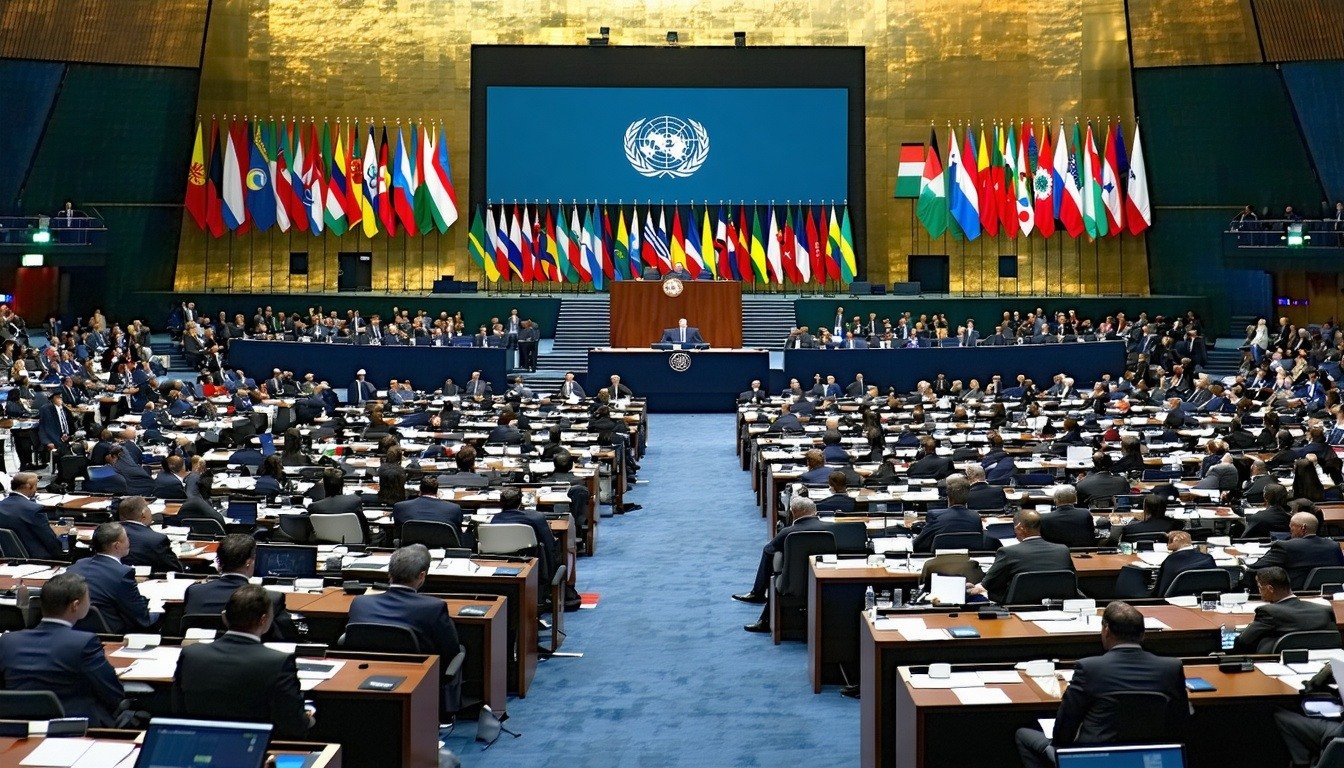BLOG
Article 6 of the Paris Agreement and the Carbon Credit Market -Explore the impact in depth- (Second Part)
2025.06.10
Regarding the carbon credit market, broadly speaking, there are two types: the compliance market, where participants are required to act in accordance with (legal) obligations set by regulations within specific systems or frameworks, such as the Kyoto mechanisms or the EU-ETS; and the voluntary market, where participants act voluntarily without bearing specific obligations outside of specific systems.
The market for credits, known as A6.4ERs, created under Article 6.4 of the Paris Agreement (hereafter referred to as PACM: Paris Agreement Crediting Mechanism), does not involve legal obligations and is not strictly speaking compliance. However, as it is under the framework of international law, the Paris Agreement, and is a flexibility measure that countries can use to achieve their NDCs, it is not entirely voluntary either. Furthermore, as introduced in the first part, the cooperative approaches under Article 6.2 have opened the way for voluntary credits to become so-called Article 6 credits through their conversion into ITMOs. Considering these circumstances, the author personally views the market for Article 6 credits as a quasi-compliance market with a voluntary character.
Regarding the impact on the market in the future, it is important to note that there are two main purposes of use on the demand side. One is the goal of achieving NDCs by the Parties to the Paris Agreement, and the other is the achievement of voluntary targets such as net zero by companies and others by 2050. Especially for the latter, it can be said to have the ultimate goal of improving corporate value. Bearing in mind these purposes for using credits, this second part provides an overview of the impact of the Article 6 agreement, with the characteristics mentioned above, (including those covered in the First Part), on each market.
Key Points
-
Commentary by Ken Tammoto, Principal Strategist at Mitsui O.S.K. Lines and a climate change policy expert with an MPhil from the University of Cambridge.
- The carbon credit market divided into compliance and voluntary types by legal obligation.
- Compliance market expects expansion with strengthened NDCs and increasing Article 6 use.
- Voluntary market temporarily declined, but demand should rise as quality improves.
- Demand grows across two axes: NDC achievement and corporate net-zero targets.
- Article 6 credits promote transparency, credibility, and quality improvement market-wide.
Compliance Market
In February 2025, the Japanese government submitted new NDCs targeting 2035 and 2040 to the UNFCCC*1, but as regulations under the Paris Agreement are becoming increasingly stringent*2, each Party is compelled to set higher, more ambitious targets, requiring further self-driven efforts. Representative policies for this include carbon taxes and emissions trading. In relation to carbon credits, the number of cases where cap-and-trade style emissions trading schemes, such as Japan's GX-ETS, are introduced is expected to increase in the future. In other words, the compliance market will expand as regulations under the Paris Agreement are strengthened.
However, even within the compliance market, the core cap-and-trade schemes are implemented in a decentralized manner in over 30 jurisdictions worldwide. There is a wide variety, ranging from supranational level systems like the EU-ETS, to national level ones such as China, the UK, South Korea, and New Zealand, to those implemented at the state level in cooperation or linkage in the US and Canada. Some schemes are even operated solely by local governments, such as those in California and Tokyo. The credit prices traded in these markets also vary widely (see table below), and if these compliance markets were to have a direct relationship with the Article 6 agreement of the Paris Agreement, it would be when Article 6 credits become available within each cap-and-trade scheme, similar to how credits derived from CDM or JI were available in the EU-ETS during the Kyoto Protocol era, albeit with limits.
(*1)
Aims to reduce emissions by 60% from fiscal year 2013 levels by 2035 and by 73% by 2040.
(*2)
For example, Parties are under a legal obligation to prepare and submit their NDCs every five years, and they are also subject to a constraint that each successive NDC should be more ambitious than the previous one. However, the latter is not a legal obligation, as the relevant provision uses "will" instead of "shall."

Map of Carbon Taxes and ETSs
(Source: World Bank Group. State and trends of carbon pricing)

Prices and Coverage Across ETSs and Carbon Taxes, as of April 1, 2024
(Source:World Bank Group. State and trends of carbon pricing)
Indirectly, because the agreement is under the Paris Agreement—the most important international treaty on climate change—credits generated under it are widely recognized as being transparent, reliable, and high in quality. As a result, compliance systems and markets are expected to move toward aligning with the principles of Article 6. For example, in October 2024, Japan and Indonesia signed a Mutual Recognition Agreement (MRA)*3 to confirm that their respective GHG reduction certification schemes—Japan’s JCM and Indonesia’s SPEI*4—are equally appropriate and sufficient under a cooperative approach based on Article 6.2. and in March 2025, at the meeting for promoting and utilizing Japan's JCM*5, a resolution was adopted to abolish the JCM implementation guidelines and formally recognize the JCM framework as a bilateral cooperative approach under Article 6 of the Paris Agreement.
(*3)
An agreement between two or more countries to recognize each other's conformity assessment results in the field of environmental protection.
(*4)
SPEI is an Indonesian abbreviation for Sertifikasi Penurunan Emisi Indonesia, and its English name is Indonesia GHG Emission Reduction Certification Scheme.
(*5)
Although it is difficult to call JCM itself ‘compliance’, it is treated here as quasi-compliance due to its direction of conforming to the Paris Agreement.
Voluntary Market
During the transition period from the Kyoto Protocol to the Paris Agreement, influenced by the SDGs and especially due to an increase in companies setting net zero as a voluntary target, the voluntary market saw a period of rapid expansion. As will be discussed later, systems aiming for the expansion and quality improvement of voluntary credits were established to institutionally support this trend, including TSVCM (Taskforce on Scaling Voluntary Carbon Markets), ICVCM (The Integrity Council for Voluntary Carbon Markets), and VCMI (Voluntary Carbon Markets Integrity Initiative)*6. However, partly due to growing criticism of certain projects being greenwashed from the perspectives of baseline*7, additionality*8, permanence*9, and leakage*10, there has been a recent tendency for the market to decline somewhat (see figure below). Against this background, partly influenced by factors such as neutralization conditions*11 by the SBTi (Science Based Target Initiative), interest among companies setting voluntary targets such as net zero has increased in nature-based CDR credits, represented by afforestation-based credits, and technology-based CDR credits, represented by DAC (Direct Air Capture). However, in the case of the latter, reflecting the enormous technological development costs, the price of credits, especially those from DAC, is very high and the supply is still very small. This is likely reflected in the fact that while the trading volume has halved in the two figures below, the trading value has only slightly decreased.
Meanwhile, from the ESG perspective of fulfilling corporate social responsibility and the call for greater ambition under the Paris Agreement, the trend of seeking higher quality voluntary credits, while paying attention to greenwashing, is likely to increase further. If there are eligible voluntary credits recognized within cap-and-trade schemes, demand is also expected to increase in that regard. For example, although Singapore does not implement cap-and-trade style emissions trading, it has a carbon credit trading market and allows offsetting a portion of its carbon tax (up to 5%) with international voluntary carbon credits. As introduced in the first part, it is actively promoting cooperative approaches under Article 6.2.
(*6)
See "Movements towards securing high quality and integrity of voluntary credits and Article 6 credits" below.
(*7)
Assumed GHG emissions if the reduction project is not implemented.
(*8)
That there are GHG reductions or removals that would not have been achieved if the project had not been implemented.
(*9)
That GHG reductions/removals are maintained over a long period.
(*10)
An increase in emissions in other areas as a result of implementing an emission reduction/removal project in one area (e.g. shifting emission sources).
(*11)
Where only CDR credits are allowed for neutralization of residual emissions towards 2050 net zero.


(Source:ECOSYSTEM MARKETPLACE INSIGHTS REPORT State of the Voluntary Carbon Markets 2024)
Outlook for Article 6 Credits
Many Parties to the Paris Agreement are developing countries, and in most cases, even if they have significant mitigation potential, they cannot set very ambitious targets due to financial and technological constraints. Therefore, it is not uncommon for countries to set two types of NDCs: one assuming support from developed countries, and another based on their own efforts. Many Parties are calling for the use of Article 6 market mechanisms to achieve their NDCs (see table below). For developing countries, the implementation of Article 6 projects by developed countries (investor countries) in their own country allows them to receive benefits such as funding and technology transfer. For developed countries, this enables them to supplement the portion of their NDCs targets that cannot be achieved through self-driven efforts alone by using Article 6 credits converted into ITMOs. From this perspective, both the demand and supply of A6.4ERs, which are credits originating from the PACM, are expected to increase further in the future. Regarding Article 6.4, as methodologies become available, projects utilizing them will begin operation. Meanwhile, as mentioned in the first part, in countries where cooperative approaches like JCM can be implemented, conversion to ITMOs under Article 6.2 becomes possible. Therefore, the use of Article 6 credits is expected to expand significantly with the combination of both.
%20intend%20or%20are%20likely%20to%20use%20the%20Article%206%20approach%20(1).jpg?width=828&height=502&name=78%25%20of%20NDCs%20(131%20out%20of%20168%20countries)%20intend%20or%20are%20likely%20to%20use%20the%20Article%206%20approach%20(1).jpg)
(Prepared based on Source: UNFCCC NDC Synthesis Report 2024)
Overall Quality Improvement
As mentioned above, an expansion in the use of voluntary credits is expected as companies increasingly focus on their voluntary targets. However, in order to avoid criticism of greenwashing, which is considered one of the factors contributing to the contraction of the market since 2022, high quality with integrity is required. For example, regarding the baseline, which has often been a concern in REDD projects, the practice of using static baselines will be phased out, and the use of dynamically changing baselines, known as dynamic baselines, will become widespread. Furthermore, problematic issues such as additionality, leakage, and permanence that are related to fatal flaws for project implementation will be strictly scrutinized. Moreover, monitoring to determine emission reductions (removals) will require greater accuracy than before.
Furthermore, in each compliance system aiming to achieve NDC, the quality improvement of the credits handled there is essential. In the case of cap-and -trade scheme within the scope of self-driven efforts, the MRV*12and reductions there will be reflected in the national GHG inventory and submitted to the UNFCCC Secretariat. If any concerns are raised regarding the content, a technical review will be conducted and areas requiring improvement identified.
Thus, both compliance and voluntary credits used for achieving NDC targets and realizing 2050 net zero will see an overall quality improvement. In this process, the specific contents, including the methodologies and procedures for creating Article 6 credits, are expected to play a central role as a benchmark for the overall quality of carbon credits in general.
(*12)
Refers to the mechanism for Measurement, Reporting, and Verification of the status of GHG emission reductions.
 Baku and the Caspian Sea (Photo by the author)
Baku and the Caspian Sea (Photo by the author)
Towards Linkage and Integration of Both Markets
In 2015, Mark Carney, the former Governor of the Bank of England and the current Prime Minister of Canada who launched the TCFD (Task Force on Climate-related Financial Disclosures), proposed establishing TSVCM as a task force in 2020 with the aim of expanding the carbon credit market, as there would likely be a future shortage of carbon credit supply. He also advocated for increasing the voluntary market size by 15 times while simultaneously enhancing its quality. Then, ICVCM, responsible for developing, managing, and evaluating high-quality requirements, was established in 2021, and in 2023, the requirements for high-quality credits, CCPs (Core Carbon Principles), were published.
In response to these developments on the supply side of credits, VCMI was established in 2021 under the leadership of the UK government as a demand side initiative, along with the release of its Claims Code*13. Because ICVCM and VCMI partnered in 2023, companies can now claim to be using reliable, high-quality credits by going through a series of procedures (see figure below)*14. However, it is important to note that these credits are separate from Article 6 credits and are intended for use in achieving companies’ voluntary targets.

.jpg?width=4424&height=1891&name=Ensuring%20the%20Integrity%20of%20the%20Voluntary%20Market%20Flow%20(1).jpg)
(Prepared by the author based on ICVCM, VCMI materials, etc.)
(*13)
Guidelines for claiming to be using reliable, high-quality credits.
(*14)
See here for the VCMI Claims Code.
When Article 6 credits are used to enhance corporate value, corresponding adjustment is unnecessary as it is used as a mitigation contribution (see first part). Therefore, the use of Article 6 credits for enhancing corporate value is expected to increase going forward. Accordingly, the choice between pursuing CCP-labeled high-quality credits or Article 6 credits depends on each company’s strategy. However, considering the complex procedures involved with CCPs and the Claims Code, the incentive to aim for CCPs instead of PACM and other Article 6 credits is likely to remain limited.
With regard to CORSIA (Carbon Offsetting and Reduction Scheme for International Aviation), many eligible voluntary credits are currently used for the emission reduction obligations imposed on the aviation industry. However, from the second phase in 2027 onwards, as obligations will be imposed on all ICAO member states, voluntary credits will be used within a compliance system. Similarly, in California's emissions trading system, voluntary credits, such as ACR (American Carbon Registry) and CAR (Climate Action Reserve), are accepted. Including the example of Singapore mentioned earlier, if there is an increase in cases where similar practices are permitted in various compliance systems, the scope of voluntary credit use will expand, leading to an increase in supply. This may result in a decrease in carbon prices. The EU-ETS has a price stabilization function called MSR*15. However, as the use of voluntary credits in compliance systems becomes more widespread, further discussions will likely be needed on the governance and design of market mechanisms with appropriate oversight functions.
Regarding technology-based CDR credits, which have been mainly found in the voluntary market until now, as methodologies become developed under Article 6, their prices are expected to gradually decrease in the medium to long term, due to economies of scale and competition from nature-based CDR.
Meanwhile, in the EU, the CRCF (EU Carbon Removals Certification Framework) received approval from the EU Council at the end of last year. This is the world's first certification standard for voluntary carbon removals, and the establishment of a highly transparent system endorsed by the EU is expected. Although this is a voluntary system within the EU, it is expected that the relationship with CDR credits under Article 6 of the Paris Agreement will need to be clarified in the future, not only in relation to the EU-ETS, CSRD*16, and CBAM*17.
(*15)
Abbreviation for Market Stability Reserve, which aims to suppress the oversupply of emission allowances (EUAs) and stabilize emission permit prices by automatically adjusting the volume of EUA auctions.
(*16)
Abbreviation for Corporate Sustainability Reporting Directive, which requires companies to disclose the type and scale of credits used in their decarbonization plans.
(*17)
Abbreviation for Carbon Border Adjustment Mechanism, also known as Carbon Border Adjustment Measure. This is a carbon border adjustment measure that requires the purchase of certificates based on carbon emissions per product (= import charge) for imports of cement, aluminum, fertilizers, electricity, hydrogen, and iron and steel from countries outside the region. It imposes an obligation to report information such as emissions per product unit and the carbon price paid in the country of origin, and is scheduled for full implementation in 2026.
As discussed above, institutional cooperation and credit utilization methods between compliance and voluntary markets have been evolving, but high-integrity, high-quality credits remain unchanged. Considering the current situation referred to as the climate crisis, addressing the significant threat to natural capital, which forms the foundation of all human economic and social activities, is the most important challenge. Therefore, returning to the basics, mitigating GHG emissions is a prerequisite. The importance of nature-based projects, including sustainable development of communities at project sites and biodiversity conservation, is expected to increase further.
Looking at the medium to long term future, as the use of Article 6 credits through the flexibility measures of the Paris Agreement and market linkage expands (although institutional adjustments will take time), companies using credits will have more options, not only between the compliance and voluntary markets but also within each market. At that time, companies should determine their direction through a new medium- to long-term corporate strategy grounded in corporate philosophy, social responsibility, and integrated thinking. At the same time, it is crucial to realize again that the climate crisis—and the resulting threat to natural capital—is the fundamental starting point for these efforts.
 COP29 Venue Night View (Photo by the author)
COP29 Venue Night View (Photo by the author)

Article 6 of the Paris Agreement and Carbon Credit Market -COP29 Agreement over 9 years after the Paris Agreement was signed- (First Part)
.png)
Beyond ESG Series: Universal Ownership and Corporate Behavior (Part 1) - Responding to Climate Change, Natural Capital, and Biodiversity
.png)
Beyond ESG Series: Universal Ownership and Corporate Behavior (Part 2) - Responding to Climate Change, Natural Capital, and Biodiversity

Writer:Ken Tammoto
MPhil of Development Studies from University of Cambridge, I am a former Program Officer at the United Nations Environment Programme (UNEP) headquarters in Nairobi, Kenya. After returning to Japan, I accumulated experience in various sectors, including government, banking, and securities-related think tanks. In 2022, I joined MOL as the Principal Strategist in the Energy Business Strategy Division. With over 30 years of involvement in climate change policy, my professional journey has been dedicated to addressing environmental challenges. While I have a wide range of hobbies, living without music is simply unimaginable for me.
Recommended Articles
2022.07.05
- General Shipping
2021.04.13
- Energy
2023.12.19
- General Shipping
2021.08.07
- Eco Friendly
2025.03.18
- General Shipping
Latest Articles
2025.12.09
- Eco Friendly
- General Shipping
2025.12.03
- General Shipping
2025.11.20
- Energy
- General Shipping
- BLOG
- Article 6 of the Paris Agreement and the Carbon Credit Market -Explore the impact in depth- (Second Part)








